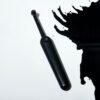Picture this: you’re about to embark on a long-awaited vacation, and as you finish packing your toothbrush, it hits you – should I pack my toothbrush cover? It’s a question that has divided dental hygiene enthusiasts for years. Some swear by them, while others argue they’re unnecessary. So, do you really need a toothbrush cover? Let’s explore the pros and cons in detail and find out once and for all!
Introduction to Toothbrush Covers
A toothbrush cover is a small plastic or silicone case that is used to protect your toothbrush. It is typically round in shape and has a hole in the center for the toothbrush handle to go through. The cover helps keep your toothbrush clean and protected from germs.
While some people may think that a toothbrush cover is not necessary, it can actually be beneficial, especially if you travel frequently or share a bathroom with others. If you are someone who is constantly on the go, a toothbrush cover can help keep your toothbrush clean and safe from bacteria. And if you share a bathroom with others, a toothbrush cover can help prevent the spread of germs.
There are many different types of toothbrush covers available on the market today. You can find them in a variety of colors, sizes, and materials. Some even come with built-in germ-killing technology. No matter what type of toothbrush cover you choose, make sure it is made from durable material that can withstand repeated use.
Benefits of Covering Your Toothbrush
There are many benefits of covering your toothbrush. One benefit is that it keeps your toothbrush clean and free of germs. When you cover your toothbrush, it is not exposed to the air, which can contain bacteria and other particles that can contaminate your toothbrush. Another benefit of covering your toothbrush is that it protects your toothbrush from dirt and other debris. If you do not cover your toothbrush, the bristles can become clogged with dirt and debris, which can make cleaning your teeth more difficult. Finally, covering your toothbrush can help to extend its lifespan by protecting the bristles from wear and tear.
Types of Toothbrush Covers
There are a few different types of toothbrush covers that you can choose from. The most popular type is the plastic cover. These come in a variety of colors and styles, and they are usually very affordable. Another option is the silicone cover. These are also available in a variety of colors and styles, but they are more expensive than the plastic covers. Finally, there are metal covers. These are the most expensive type of cover, but they offer the best protection for your toothbrush.
How to Clean Toothbrush Covers
Toothbrush covers are not a necessity, but they can be helpful in keeping your toothbrush clean. If you use a cover, be sure to clean it regularly. Here is how to clean toothbrush covers:
-Remove the cover from the toothbrush.
-Rinse the cover with warm water.
-Spray the cover with an antibacterial cleaner or wipe it down with a disinfectant wipe.
-Rinse the cover again with warm water and dry it off before putting it back on the toothbrush.
Tips for Storing Your Toothbrushes Properly
Toothbrushes should be stored in a clean, dry place. If possible, store them in a toothbrush holder that allows for air circulation. If you are storing your toothbrush in a medicine cabinet, make sure the cabinet is well-ventilated so that the toothbrush can dry out between uses.
Alternatives to Covering Your Toothbrush
There are many alternatives to covering your toothbrush, and each has its own set of pros and cons. Here are a few of the most popular options:
- Storing your toothbrush in a closed cabinet or drawer: This is one of the simplest and most effective ways to keep your toothbrush clean and protected from dust and other contaminants. However, it also requires that you have a dedicated space for storing your toothbrush, which may not be possible in small bathrooms.
- Using a toothbrush cover: Toothbrush covers can be made from a variety of materials, including plastic, silicone, or even metal. They typically seal around the base of the toothbrush to keep out dust and other particles. While covers can effectively protect your toothbrush, they can also be difficult to clean and may trap moisture, which can promote the growth of bacteria.
- Wrapping your toothbrush in a towel: A towel can be used to cover your toothbrush when it’s not in use, and this method has the added benefit of being able to absorb any moisture that may accumulate on the bristles. However, towels can also harbor bacteria, so it’s important to make sure they are laundered frequently.
- Soaking your toothbrush in an antibacterial solution: This is a good option for those who are concerned about bacteria growth on their toothbrush. Simply soaking your brush in a solution of water and vinegar or bleach will
Conclusion
We hope this article has answered your questions and helped you decide if a toothbrush cover is necessary or not. While it won’t guarantee that your toothbrush will be completely germ-free, it can help reduce the number of bacteria and other organisms on the bristles. Whether you choose to invest in a toothbrush cover or not, make sure to always clean your brush after every use for maximum oral hygiene.



